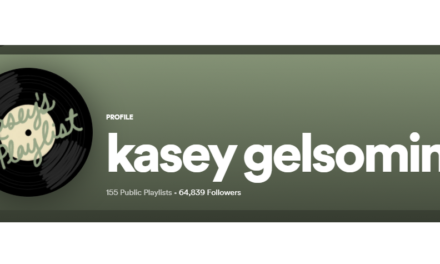With every Google algorithm update comes a change in the way Search Engine Optimization (SEO) works. One has to redefine and relearn the best practice. SEO is not done once and over, rather, it is a continuous effort. Like any other channel, SEO work calls for experiments or tests to improve our understanding and improve the strategy.
You can learn a lot about how the search engines algorithms work by analyzing their patent filings. That said the SEO professional still has to rely on experiments and testing to identify and develop best practices that can earn higher rankings and significant traffic.
Measure Your Success
As you consider a pilot, establishing what will be the success criteria is critical. Only monitoring the rankings will result in insufficient data. It is important to maintain a user focus in ascertaining the success of any test. Rankings have to be part of the test, but they can’t be the only part.
Observe how users engage with the site. Consider metrics such as click-through, engagement, or conversion rates. If the increase in rankings comes with an increase in click-through and this acquired user then engages with the site, then you can conclude that the pilot is successful.
Don’t forget that internal pilots bring efficiencies into the organization. These pilots could focus on improvement in time, cost, or process enhancement. The success metric here would be to reduce time, create better ROI, and have fewer bottlenecks.
How to Create an A/B Test for SEO
Traditional A/B testing involves creating two versions of a page and sending two separate groups of visitors to the different versions. But in SEO that is not recommended as Google will view these two different versions as duplicates.
For the SEO pilot, we should create groups of pages. In this test, there will be only one version of each page. Identify the set of pages you want to improve, then separate these pages into the control and variant groups. Test the new SEO premise on the variant pages and measure the changes in this set of pages.
Prune Your Site
Although the first principle of SEO is content, more pages don’t necessarily mean more traffic. This simply makes this pilot most important. Consider “pruning” your site by proactively removing underperforming pages. The assumption here is, when you remove less relevant content or low-quality content, you will refine the overall quality signal of your site since the remaining content now aligns with users.
For this test, you should conduct a content audit. To identify the underperforming pages review and analysis, if the pages have no organic search traffic, rank poorly, or do not receive any backlinks.
Instead of going for a detrimental approach and removing the content entirely you should test the hypothesis by adding a noindex tag on these low-quality pages.
Improve Site Loading Times
Marketers should be concerned about the loading speed of their website as it directly impacts how Google is going to rank the site on the SERP. Consider yourself browsing the website on your mobile device; if you have felt the frustration of waiting then so have your users. And people don’t appreciate waiting for pages to load. Slow page loading times have a trickle-down effect. The longer a page takes to load, the less traffic, more bounces, and less conversions you’ll see.
Google released a mobile page speed industry benchmark report in February. Turns out, “The probability of someone bouncing from your site increases by 113% if it takes seven seconds to load.”
Massive image files, poor or redundant code can all slow the entire process. Rather than forcing the browser to retrieve multiple CSS or Javascript files to load, try combining your CSS files into one larger file. Optimize your images for the right screen load, compress images and optimize files. Utilize CDNs and remove unused scripts/files. Browser caching allows assets on your website to be downloaded to your hard drive once into a cache, or a temporary storage space. Those files are now stored locally on your system, which allows subsequent page loads to increase in speed. Begin your pilot with a test of your load speed and then implement some of the best practices on a test group of pages. Gauge the performance improvement at each iteration and see which provides you the biggest boost. Based on the results, you can roll out the changes to the rest of the website.
Test the Impact of Writing Compelling Title Tags and Meta Descriptions
Before we start this pilot, it is important to understand what exactly the title tag and meta description are. A title tag is an HTML element that specifies the title of a web page. Title tags are the clickable headlines displayed on search engine results pages. The meta description is a snippet of up to about 155 characters—a tag in HTML— which summarizes a page’s content. This snippet is the two rows below the headline in the search engines results pages.
So, if you think about it, titles tags and meta descriptions are your sales copy or ad line. It is the message you are giving to your users even before they click on your link. You’re attempting to attract user to click your URL instead of someone else’s. And therefore, writing compelling title tags and meta descriptions really count.
Evaluate the different meta descriptions and title tags that you are currently using on the website. Observe which ones receive the most clicks. You should consider updating the meta descriptions for pages where you observe the users are clicking on the SERP and bouncing off back immediately on arrival. If that is happening, it is a clear indicator that your meta description is misleading your user. Once you have identified the better style of meta description try to replicate them and get rid of the bad.
Yes, nofollow Links Can Work Too
SEO is all about link building. The quality of the link does matter. The better the domain authority of the link, the more valuable it is. Yes, the “followed” links are certainly worth more than “nofollowed” ones. That said the relevant “nofollow” still provides value.
Don’t add comments into your blog with you links. That is classic black hat practice.
Where is the Link on Your Page?
One of the most discussed hypotheses that exist in SEO is that a link earlier on a page carries more weight than a link lower down on the page. Many SEO professionals have tested this one. Most often we find that the earliest link on the home page ranked first. But personally speaking, I would test this only if the relevancy factors have been met. So, this one certainly merits a test. It is recommended that you take into consideration the keywords that you leverage to create the hyperlinks. As a rule of thumb, it is always better to leverage the generic terms to your upper funnel pages and the branded terms to your product/services pages.
There is no set formula to make a site successful in organic search. Every site necessitates a unique methodology. You do have to maintain the proper balance between marketing efforts, what the user is looking for and how to achieve better visibility in the SERPs. Create your own pilots, run tests, and observe which technique helps improve the performance of your site and rankings.






